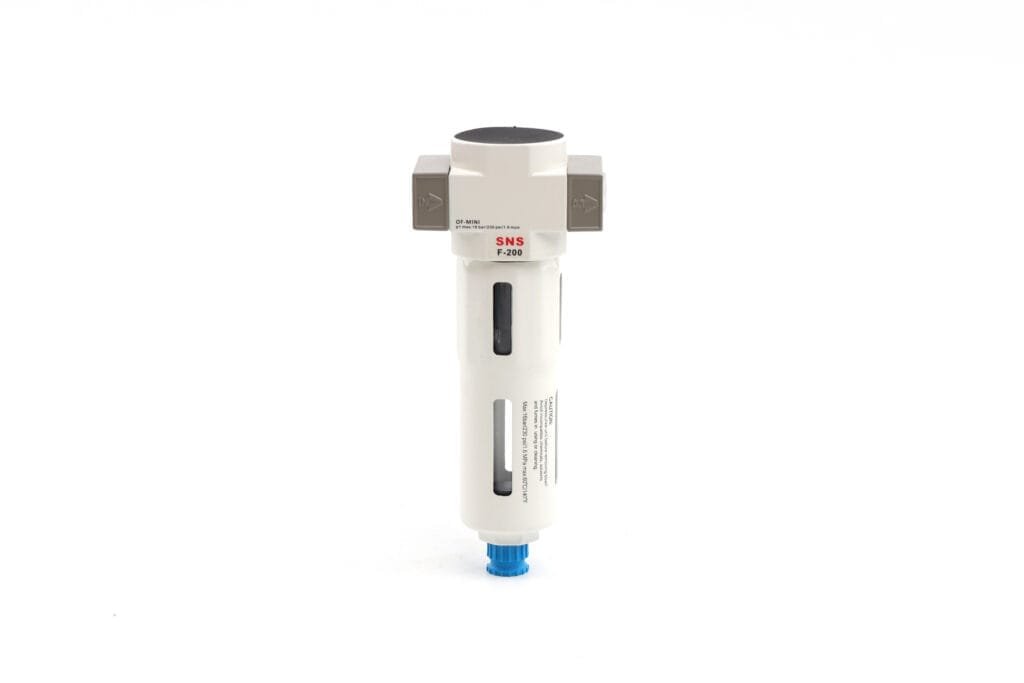What Does Air Regulator Do On A Paint Sprayer
An air regulator on a paint sprayer is a critical component designed to precisely control the airflow to the spray gun. By adjusting the pressure of the compressed air delivered to the nozzle, it ensures consistent paint application, improves finish quality, and minimizes overspray. This overview will explore the function and benefits of air regulators in paint spraying systems.
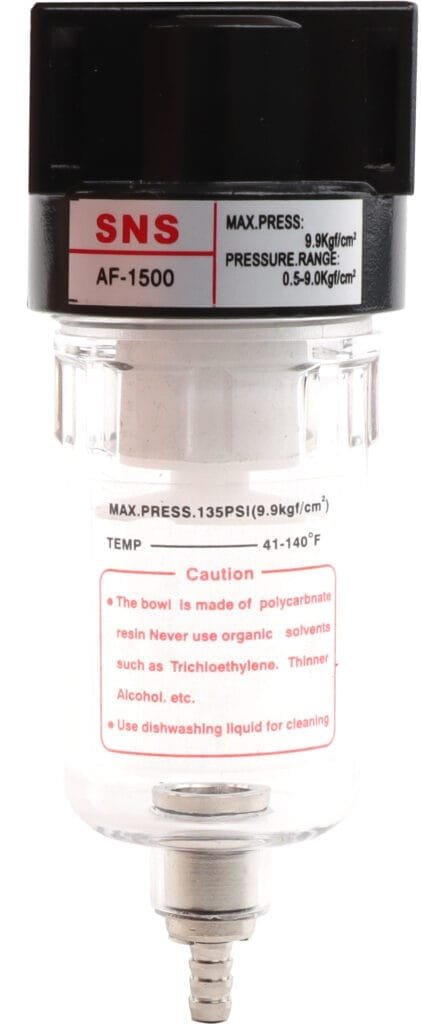
What Does A Regulator Do On A Paint Sprayer?
A regulator on a paint sprayer plays a pivotal role in controlling and stabilizing the air pressure that is delivered to the spray gun. Its primary function is to ensure that the air pressure from the compressor is moderated to a level that is both suitable and optimal for the paint application process. This not only aids in achieving a uniform and smooth finish but also significantly reduces overspray, which can result from excessively high pressure.
If the air pressure is too low, it may lead to inadequate atomization of the paint, resulting in an uneven coat that may not adhere properly to the surface being painted. Conversely, too high of an air pressure can cause excessive overspray, wastage of paint, and potential pollution of the surrounding environment.
By maintaining a consistent pressure level tailored to the specific requirements of each painting project, a regulator helps in optimizing paint flow. This ensures efficient use of materials and contributes to achieving superior finish quality. Moreover, by facilitating adjustment of air pressure according to different viscosities and compositions of paints or coatings used, regulators allow for greater versatility and precision in various spraying tasks.
How Much Air Pressure Is Needed For A Paint Gun?
For conventional spray guns, an ideal air pressure range is typically between 40 to 60 PSI (pounds per square inch). This range is often recommended for achieving a smooth and even application of paint. It’s important to note that specific adjustments within this range may be necessary based on the thickness of the paint and the specific requirements of the painting project.
HVLP (High Volume Low Pressure) paint guns require a different range of air pressure to operate effectively. These types of spray guns are designed to work efficiently at lower pressures, usually around 20 to 30 PSI at the air cap. The advantage of HVLP guns is that they are engineered to reduce overspray and provide better control over paint flow, which makes them ideal for precise and detailed work.
For LVLP (Low Volume Low Pressure) spray guns, an optimum working pressure is generally in the vicinity of 10 to 25 PSI. LVLP guns are appreciated for their ability to deliver high-quality finishes with minimal overspray and reduced air consumption compared to other types.
Do You Need An Air Regulator For A Paint Gun?
Deciding whether you need an air regulator for your paint gun involves understanding the role it plays in spray painting. Essentially, an air regulator is a device that attaches to the air inlet of your paint gun and controls the flow and pressure of the air entering the tool. This control is critical for several reasons related to both efficiency and quality of the painting process.
Uniformity and precision are paramount in achieving a professional finish with a paint gun. Without regulated air pressure, it becomes challenging to ensure consistent spray patterns, which can lead to uneven coats, drips, or blobs of paint – defects that detract from the overall quality of the finished work. Additionally, different materials and finishes may require specific pressure settings for optimal application; without a regulator, adjusting and maintaining these settings would be impossible.
Another vital aspect is resource conservation. Over-spraying not only wastes paint but also increases cleanup times and affects worker health due to increased exposure to harmful chemicals found in some paints. By enabling precise control over airflow, an air regulator minimizes wastage and contributes to a safer working environment.
Safety concerns also advocate for using an air regulator on a paint gun. High-pressure airflow can cause overspray which leads to unnecessary paint misting into the surrounding area. This not only poses health risks but also results in a messy work environment that requires additional time for cleanup.
In conclusion, while technically one might operate a paint gun without an air regulator, doing so would compromise both the quality of the painted surface and efficiency of operation. Whether you’re involved in automotive painting, woodworking finishing, or any task requiring a fine finish, equipping your paint gun with an appropriately selected air regulator ensures superior outcomes and operational safety.
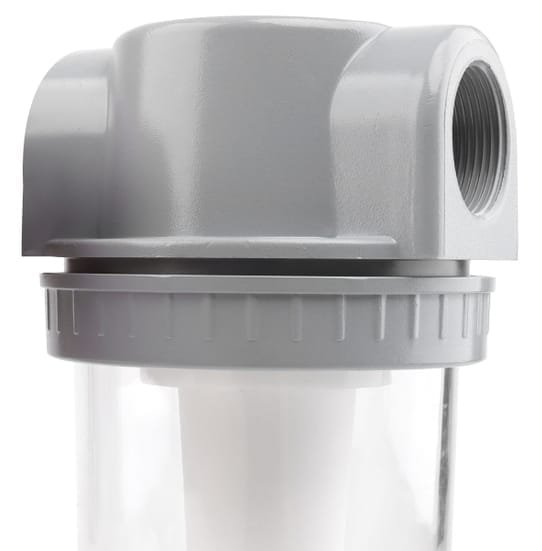
How To Choose An Air Regulator For A Paint Gun
Choosing the right air regulator for a paint gun is pivotal for achieving optimal performance and a flawless finish. An air regulator’s role is to control and maintain consistent air pressure flowing from the compressor to the paint gun, which significantly influences the quality of the paint job. Here are several key factors to consider when selecting an air regulator for your paint gun:
- Pressure Range: The first aspect to assess is the pressure range that the regulator can handle. It’s essential that the chosen regulator matches or exceeds the maximum operating pressure requirements of your paint gun for it to function effectively.
- Flow Rate: The flow rate, typically measured in cubic feet per minute (CFM), dictates how much air can pass through the regulator. Ensure that the regulator’s maximum flow rate meets or surpasses your paint gun’s requirements. Insufficient flow can lead to poor spray patterns and inadequate coverage.
- Regulator Type: Air regulators come in various designs, including diaphragm-based and piston-based types. Diaphragm regulators are commonly used for paint guns due to their precision in maintaining stable pressure levels, even when there are fluctuations in airflow.
- Size and Portability: Consider whether a compact, lightweight design is essential for you, especially if you need mobility or have limited space in your working area. Portable regulators can be easily moved between different workstations or locations.
- Compatibility and Connectivity: Ensure that the air regulator is compatible with both your air compressor and paint gun regarding connection types and sizes. Adapters may be required if there’s a mismatch in connectors or hose sizes.
- Material Durability: Look for regulators constructed from materials resistant to corrosion and breakage since they will be exposed to various chemicals found in paints and thinners. Quality construction ensures longevity and maintains high performance over time.
- Adjustment Controls: Opt for a regulator with easy-to-use adjustment controls that enable precise setting of desired pressure levels. Clear gauges are also crucial to monitor real-time pressure readings accurately.
- Price versus Quality: While budget considerations are important, investing in a high-quality air regulator might save money over time by reducing overspray issues, improving finish quality, and minimizing rework due to flaws in paint application.
By carefully weighing these factors against your specific needs, operational context, and budget constraints, you can make an informed decision on which air regulator will best suit your paint spraying tasks. This strategic approach helps ensure smooth operation across diverse painting projects while achieving professional-grade results.
What Size Air Regulator Is Best For Painting
Selecting the appropriate size air regulator for painting tasks is a critical decision that impacts the efficiency and quality of your paint jobs. The size of an air regulator for a paint gun is not about its physical dimensions but its capacity to regulate airflow accurately at required pressures for spraying.
Generally, most paint guns operate optimally within a pressure range of 15 to 30 PSI. Therefore, an air regulator that can precisely control the airflow within this range is essential.
The choice of air regulator size also depends on the type of paint gun you are using and the complexity of the painting project. For standard spray guns used in automotive and furniture painting, a regulator with a 1/4″ NPT (National Pipe Thread) fitting is commonly sufficient. This size is compatible with most setups and offers adequate flow without significant pressure drops, which could affect spray patterns and finish quality.
For larger projects or when using HVLP (High Volume Low Pressure) spray guns, consider opting for a regulator with greater capacity to maintain consistent pressure over extended periods. A 3/8″ NPT fitting might be preferable in these scenarios for its ability to handle higher volumes of air efficiently, thus supporting continuous operation without compromising performance.
It’s also beneficial to opt for an air regulator equipped with a gauge displaying both PSI and CFM (Cubic Feet per Minute). This feature allows for accurate adjustments according to specific requirements of different paints and coatings, ensuring fine control over spray patterns and finish quality.
Can An Air Regulator Improve Paint Gun Performance?
YES, an air regulator can improve paint gun performance. By providing consistent air pressure, it ensures a smooth and even application of paint.
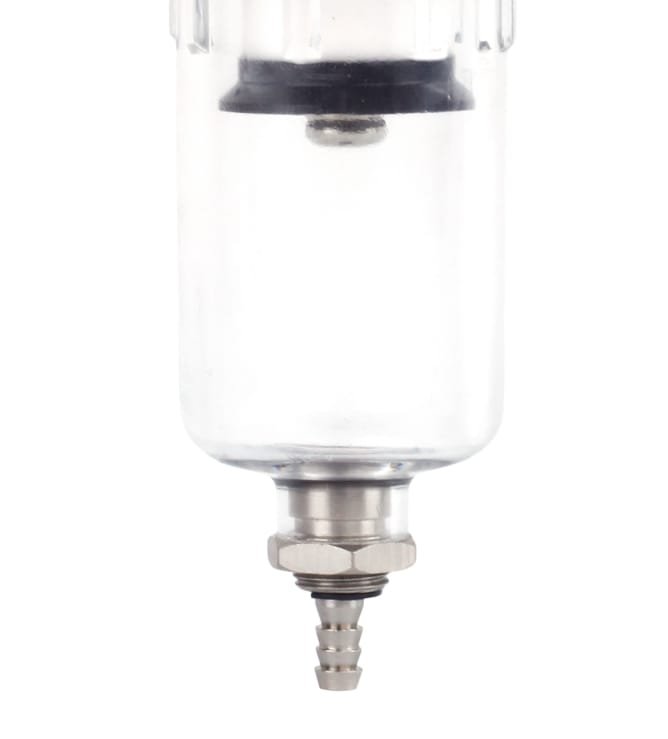
How To Install An Air Regulator On A Paint Gun
Installing an air regulator on a paint gun is pivotal for achieving optimal performance and ensuring the finest finish. Given the variety in models of paint guns and air regulators, it’s important to follow a concise, step-by-step approach to installation. This guide outlines the key steps in a clear and professional manner, highlighting necessary actions without diverting into unrelated topics.
Step 1: Preparation Before starting, ensure that all parts of your equipment are clean and in good working condition. Disconnect the paint gun and any connected air supply to guarantee safety during installation.
Step 2: Identify Installation Point Typically, an air regulator attaches directly to the base of the paint gun or onto the compressor. Deciding where to install it depends on your workspace setup and personal preference for ease of adjustment.
Step 3: Attach Air Regulator If attaching to the paint gun:
- Securely screw the air regulator onto the paint gun’s air inlet. Use thread tape if necessary to ensure an airtight connection.
- Make sure that it’s facing a direction that allows easy access for adjustments.
If connecting to an air compressor:
- Fit the regulator onto the outlet valve of your compressor with attention to creating a tight seal.
- Ensure hoses have secure fittings at both ends – from the compressor outlet through the regulator and finally to your paint gun.
Step 4: Check For Leaks After securing all connections, briefly turn on your air source to test for leaks. Listen closely at each connection point; any hissing sound might indicate a leak which could impact performance negatively.
Step 5: Fine-Tunity Adjustment Knob Most regulators come with an adjustment knob that controls air output pressure. It’s essential this is initially set according to manufacturer’s specification for your model of paint gun.
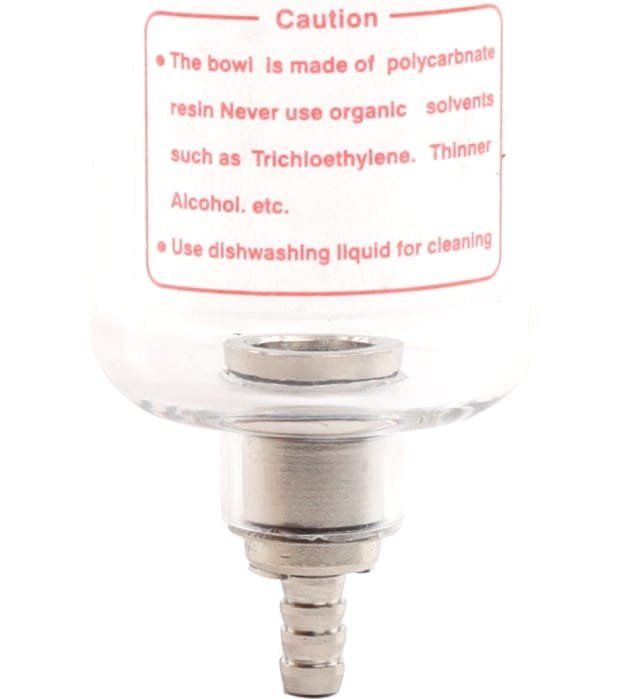
How To Adjust An Air Regulator For Spray Painting
Adjusting the air regulator for spray painting is a critical step to ensure a flawless finish and efficient operation. An air regulator controls the airflow from your compressor to your spray gun, impacting paint atomization and the overall quality of your paint job. Here’s a detailed guide on how to adjust an air regulator for spray painting for optimal results.
Step 1: Locate Your Air Regulator
Start by identifying where your air regulator is situated. Typically, it’s found attached to the compressor or along the airline leading to your spray gun. It should have a gauge displaying PSI (pounds per square inch) measurements, allowing you to monitor and adjust pressure accurately.
Step 2: Connect Your Equipment
Before adjusting the pressure, ensure that all necessary equipment is correctly connected — this includes your air compressor, hose, and spray gun. Turn on your compressor and let it build up pressure.
Step 3: Set Baseline Pressure
Check the manufacturer’s recommendations for both your spray gun and the material you’ll be using; these guidelines usually suggest an optimal operating pressure range. Initially set your regulator slightly above this recommended pressure while monitoring the gauge on the regulator.
Step 4: Fine-Tune With Test Sprays
With safety gear on, perform some test sprays on scrap material or cardboard to see how the paint applies. If you notice poor atomization or an uneven pattern, adjustments are necessary. Increase pressure if paint appears heavy and wet with minimal coverage area or decrease it if you see excessive overspray or paint drying too fast before reaching the surface.
Step 5: Adjust According To Technique And Conditions
Your spraying technique will also influence how you adjust the air regulator. Fast movements require higher pressure for adequate coverage, whereas slower techniques might benefit from lower pressures for more controlled applications. Additionally, take into account environmental factors such as temperature and humidity which can affect paint behavior.
Step 6: Lock In Settings
Once you’ve found an ideal setting that provides consistent coverage without excess overspray or dripping, make sure to lock in that setting on your air regulator if it has this feature. This ensures stability in airflow and pressure throughout your painting project.
Final Considerations
Always release any built-up pressure within both the air compressor and spray gun after use by safely depressurizing them according to manufacturer instructions. This not only prolongs their lifespan but ensures safe storage away from potential hazards.
In Conclusion
An air regulator on a paint sprayer plays the critical role of ensuring consistent pressure, which in turn delivers a smooth, even coat of paint.
To achieve the best results in your painting projects, consider investing in a high-quality air regulator. Explore our range today and take the first step towards mastering your paint sprayer’s performance.

